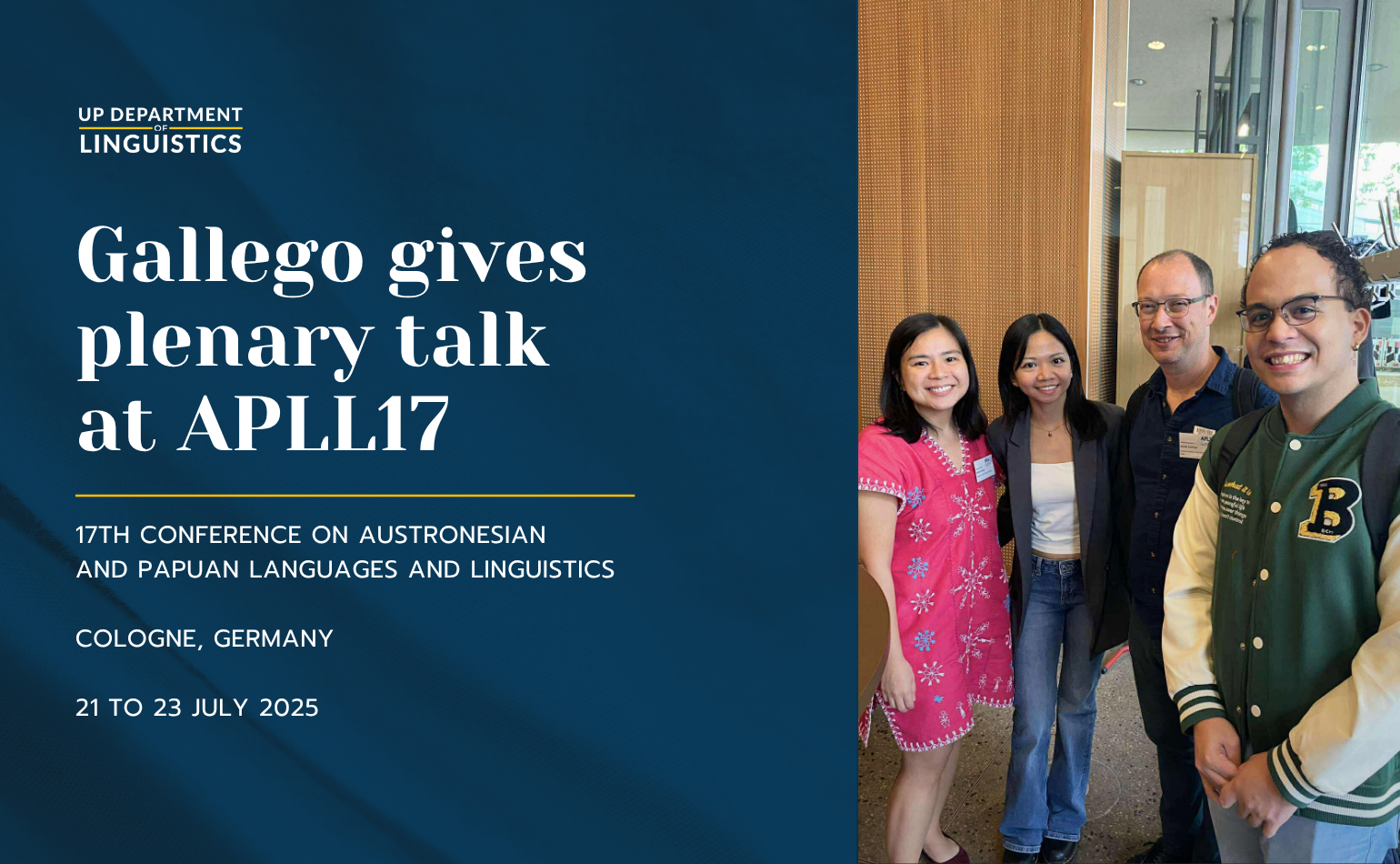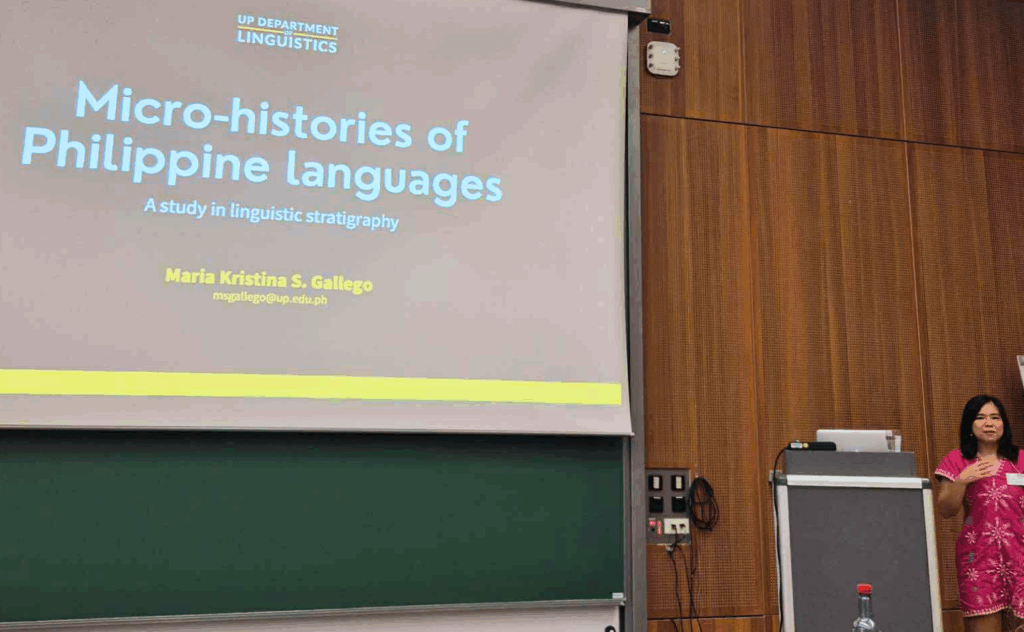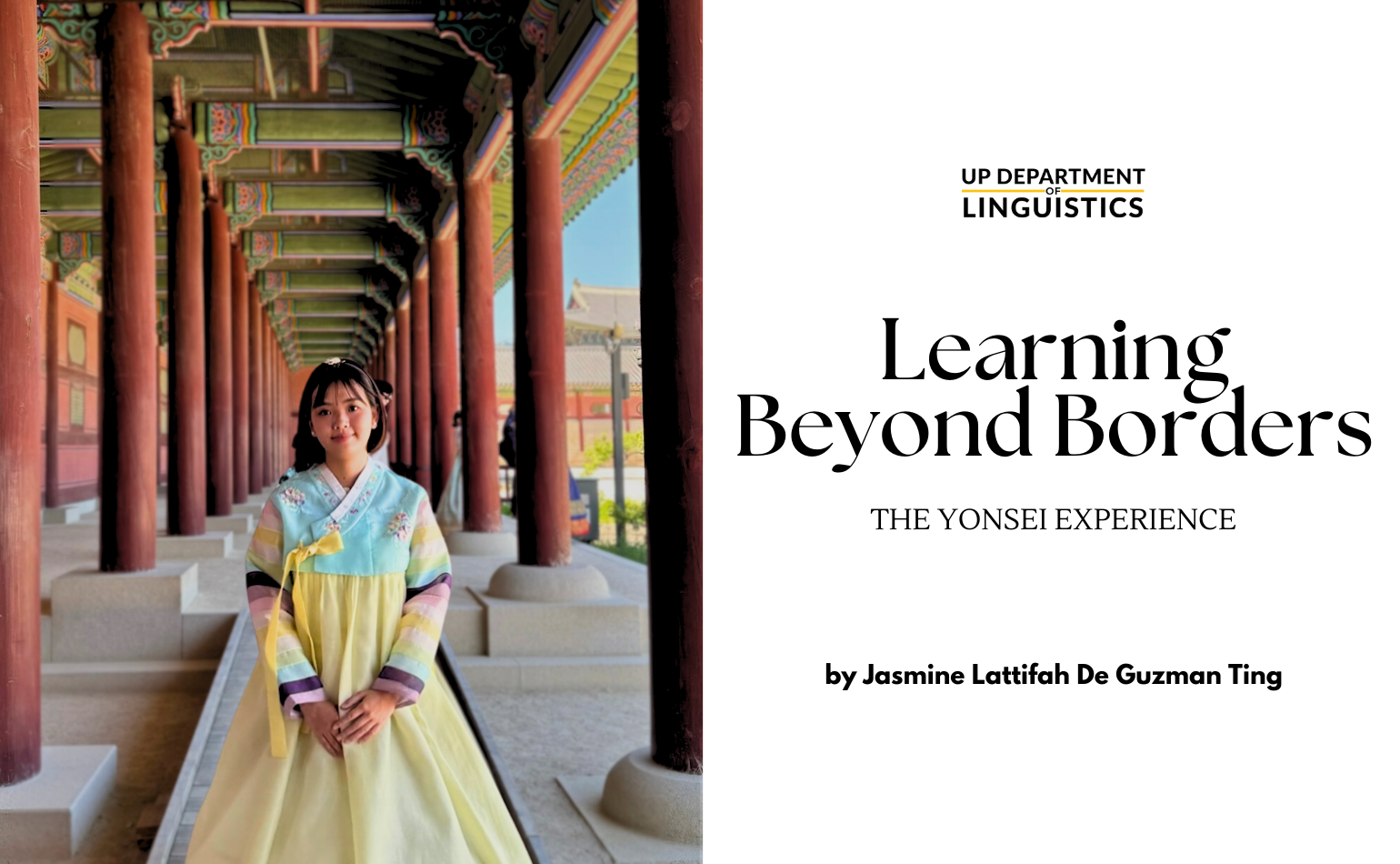
Department Chair Kristina Gallego was one of the plenary speakers at the 17th Conference on Austronesian and Papuan Languages and Linguistics which is being held in Cologne, Germany from 21 to 23 July. Her talk is titled “Micro-histories of Philippine languages: A study in linguistic stratigraphy.”
Below is the abstract:
Micro-histories of Philippine languages: A study in linguistic stratigraphy
The Philippines occupies an important position in the dispersal of Austronesian speakers as it is assumed to be the first landing point out of homeland Taiwan. There is thus much interest regarding the development of the Philippine languages, but debates on the nature of their relationship continue to persist, and it remains uncertain whether the similarities found among the languages are due to shared ancestry under a single proto-language (Blust 2019, 2020, Zorc 2020) or an outcome of a linkage history (Liao 2020, Reid 2020, Ross 2020).
Considering case studies on specific languages and lower-order subgroups across the Philippines presents a more complex picture. For instance, we can observe parallel morphological paradigms that distinguish native and non-native materials in the Batanic language Ibatan (Gallego 2022), variation in common noun articles, pronouns, and conjunctions in the Bisayan language Porohanon (Santiago 2024), and the simplification of some morphological paradigms in the Southern Mindanao languages (Dumoran 2025). These outcomes are argued to be the result of a complex sociocultural history in the respective speech communities, which all involve intense contact with speakers of related languages. Other kinds of contact scenarios are also observable in the Philippines, such as those involving historical language shift among the non-Austronesian Negrito populations (Reid 1987, 1994), and the longstanding contact between speakers of the (non-Philippine) Sama-Bajaw language Abaknon with speakers of the neighboring Bisayan language Waray (Kaufman forthcoming).
These detailed case studies reveal layers of language change (i.e., linguistic stratigraphy), which
can be linked to different phases in the histories of the speech communities. As a complement to
Klamer (2019), this paper shifts away from the bird’s eye (i.e., traditional macro-level models), and instead takes the worm’s eye view in investigating the linguistic development in the Philippines (i.e., bottom-up, context-dependent micro-histories). Such direction for historical linguistics may offer more nuanced answers to ongoing debates and questions in the field.
BA Lingg (1999) alum Daniel Kaufman [Queens College, City University of New York] also gave a plenary talk on “Why is omni-argumentivity so much harder than omni-predicativity?,” while BA Lingg (2018) alum Anna Celina Desiderio [Université Paris Cité] gave a co-authored presentation about “Oh, tapos? On the discourse connectives tapos and tas: The different forms and functions of ‘then’ in Tagalog.” Finally, BA Lingg (2017) alum John Oliver Monghit [Humboldt University of Berlin] read his paper, “An Overview of Laguna Tagalog: Insights from Fieldwork in Ten Towns.”
2024 visiting research fellows Jed Pizarro-Guevara and Alessa Farinella [University of Massachusetts, Amherst] also presented on “Testing ambiguity avoidance as an explanation for fixed word order in the Patient Voice in Tagalog.”

Published by UP Department of Linguistics



